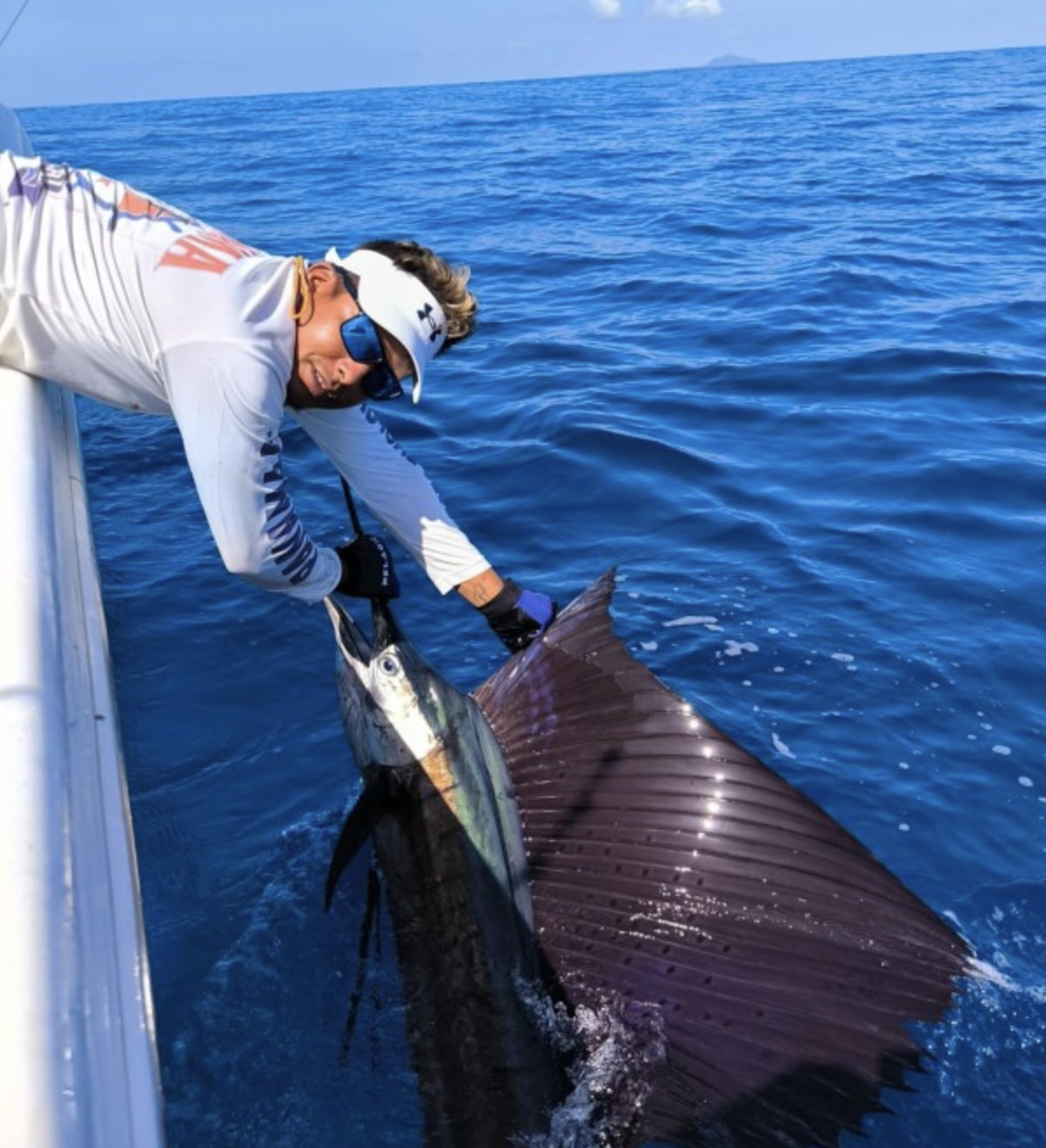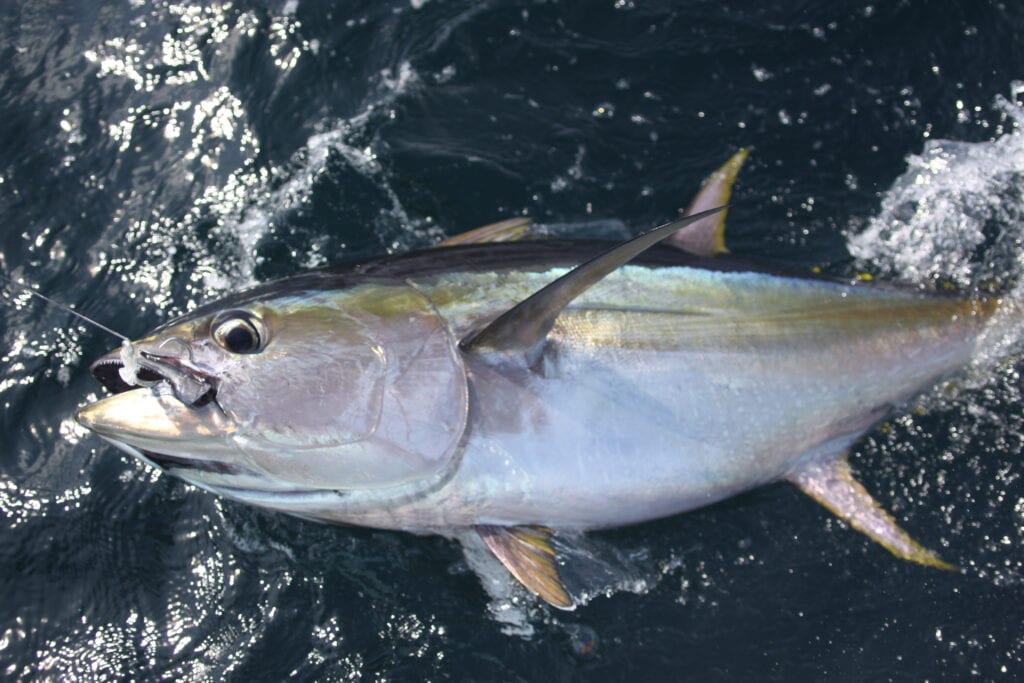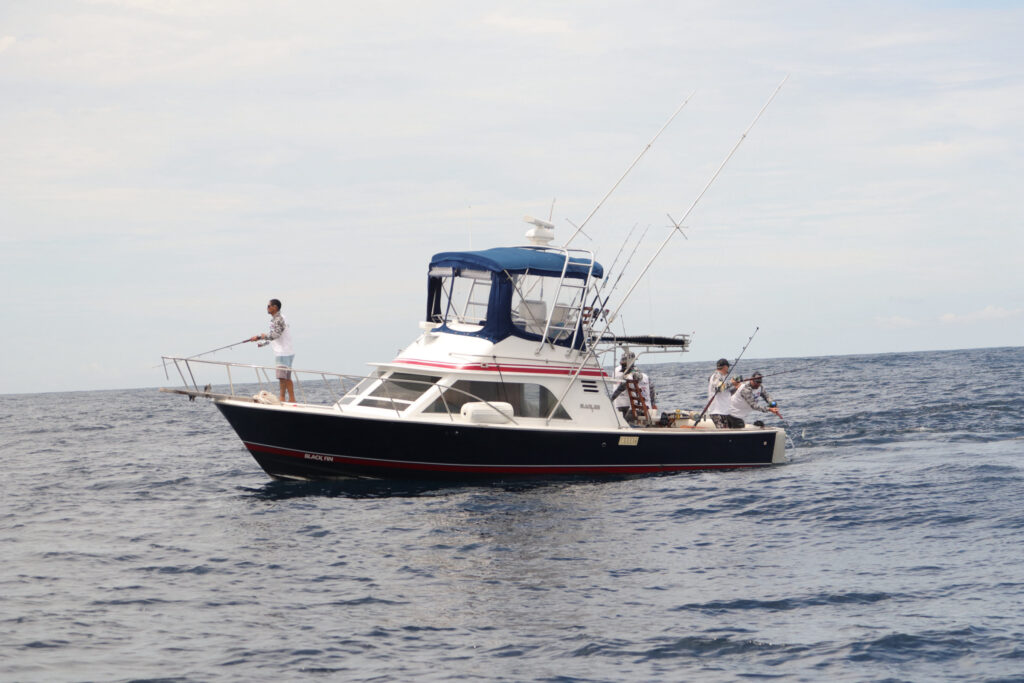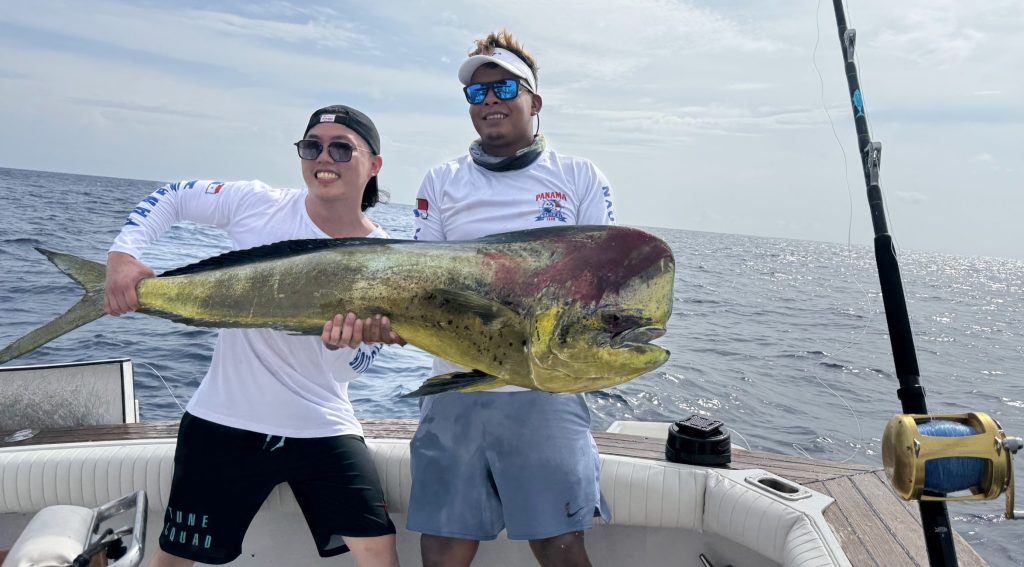What are billfish?
Billfish are a predatory species of fish that belong to the Istiophoridae family. They are a highly migratory species but typically reside in tropical and subtropical waters all over the world. Within the billfish family there are 4 main types: marlin, sailfish, swordfish and spearfish. All billfish, whether marlin vs sailfish vs swordfish, can be recognized by their spear-like rostrum or “bill,” which is used for hunting and spearing their prey. Billfish also have a dorsal fin that runs along a large part of their body and narrow pelvic fins.
Marlin Billfish
There are 4 types of marlin: Black Marlin, Blue Marlin, Striped Marlin and White Marlin.
Appearance:
Marlin are the largest type of billfish and can be quite hard to distinguish from each other, but first sign to look out for is their dorsal fin. Generally speaking the larger the fish, the smaller the dorsal fin. Black marlins are the largest with typically the smallest fin, followed by blue, striped and white marlin, which feature a giant rounded dorsal fin. Black marlin have a dark blue-black dorsal side with a light or white belly and sides. Their pectoral fins cannot be flattened, unlike the other marlin species. Blue marlin have a cobalt and dark blue back, sometimes with stripes along their sides. Striped marlin have a blue-black dorsal side with silvery white belly and cobalt blue stripes down its sides. The white marlin can be distinguished by its rounded dorsal and anal fins, as well as its brown spots along its silver-white sides.
Size of Marlin
The largest species is the black marlin, and can reach lengths of 15 feet and weigh over 1500 pounds. In the Atlantic, blue marlin are king, reaching lengths up to 13 feet and weighing over 1300 pounds. Striped marlin have an average length of 10 feet but can reach a maximum of 13 feet, and can weigh up to 490 pounds. White marlin are the smallest, with maximum length of 8 feet and weight of up to 180 pounds.
Marlin Habitats
Marlins like the tropical, subtropical and warm temperate waters of the world. Black marlins can be found in the Pacific and Indian oceans, sometimes near inshore waters and reefs but show up in scattered numbers in the open ocean. Blue marlin reside all over the world in deep blue waters and do not frequent shores. Striped marlin found in the Pacific and Indian oceans and typically frequent cooler waters than black and blue marlin. The white marlin can be found in the Atlantic Ocean, including the Gulf of Mexico, the Caribbean and Western Mediterranean.

Sailfish Billfish
Sailfish are one of the smaller billfish species. Built for speed, they are the fastest fish in the ocean and can reach speeds exceeding 110 km/h. There are two different subspecies of sailfish: the Atlantic Sailfish and the Pacific Sailfish and inhabit the epipelagic zones of the tropical and warm temperate waters of the Atlantic and Pacific Oceans respectively. They can often be found close to shore.
As the name suggest, sailfish are characterized by their oversized dorsal fin which can sometimes extend all along their entire back. They also have a more slender body and are silver with blue stripes running down their sides. When excited, their bodies light up into a bright blue with purple and golden tones. A typical sailfish averages 5 to 11 feet long and on average weigh between 50-200 pounds up to 200 pounds.
Sailfish prefer the warmer waters close to the surface and tend to hunt in groups. They are nicknamed the “wolves of the sea” due to the way they coordinate with one another, using their sail-like dorsal to trap and surround their prey from all angles in a spherical formation.
Swordfish Billfish
Swordfish can be found anywhere across the world’s oceans and have the highest ability to adapt to wider temperature differences vs other billfish. They are characterized mainly by their longer bill vs other billfish, and are brown-black in color with a whiter belly and sides. They have a tall dorsal fin on their backs and another smaller one near their tail, similar to a shark. Unlike other billfish, swordfish mostly feed at night and that can explain why swordfish have giant eyeballs, as they allow in more light to hunt in deeper and darker waters. They spend most of their day in waters as deep as 1,800 feet and come up to the surface to feed at night. They are giants of the deep, and on average weigh between 100-400 pounds.

Spearfish Billfish
Spearfish can be found throughout the world’s oceans in tropical and subtropical waters. They feature a dorsal fin similar to that of the sailfish but lacks the sailfish’s dorsal height and length. A spearfish can weigh up to 120 pounds, but average weights are between 20-60 pounds. Spearfish feed near the surface on small fish including flying fish, needlefish and squid. There are 3 species of spearfish: the Longbill, Shortbill and Mediterranean. The Longbill can be found in the northwest Atlantic, Shortbill in the Pacific and Indian Oceans, and the Mediterranean spearfish in the Mediterranean Sea.

Where to catch a billfish?
Continental shelfs are great places to target a billfish. These are areas where shallower waters close to land, drop off into the deep blue of the open water. Continental shelfs boast of biodiversity as these areas benefit from an upwell of nutrient rich water. These upwells attract the baitfish, and in turn the predators, like billfish. A great example of a continental shelf which is epic for Marlin and Sailfish fishing is Hannibal Bank in Panama.
It is also common to find some billfish species closer to shore around underwater pinnacles and other seafloor features that attract schooling baitfish.
How to catch a billfish?
Billfish are some of the fastest and biggest saltwater species that put up a tough fight once hooked. This is especially the case with marlin, making them a bucket list species for many serious anglers. When fishing for billfish, you will need appropriate gear and the right technique to stand a chance against any of them.
The most common fishing technique used when targeting billfish is trolling. Set ups can vary from several lines of lures to a single live fish. Typically, marlin and sailfish respond well to baitfish or small predator fish like bonito. If you want to go for lures, then you want to go for a lure that creates a lot of disturbance in the water while trolling. This mimics the behavior of injured prey. Popular lure choices are rubber skirts which resemble a squid’s tentacles. Other techniques such as kite fishing (resembling a flying fish) have proven to work well too, particularly for sailfish.
Billfish fishing packages in Panama
Panama Nautical Club is within close proximity to Hannibal Banks, one of the worlds best fishing grounds for marlin. The best time to come billfish fishing in our area in Panama is between December and March. In Panama, billfish are a catch and release species, giving more anglers the opportunity to experience excitement of landing billfish in the future.
Check out our fishing packages, email us at panamanauticalclub@gmail.com or call +1 800 507 1246 for more info on availabilities for your next billfish fishing quest.





